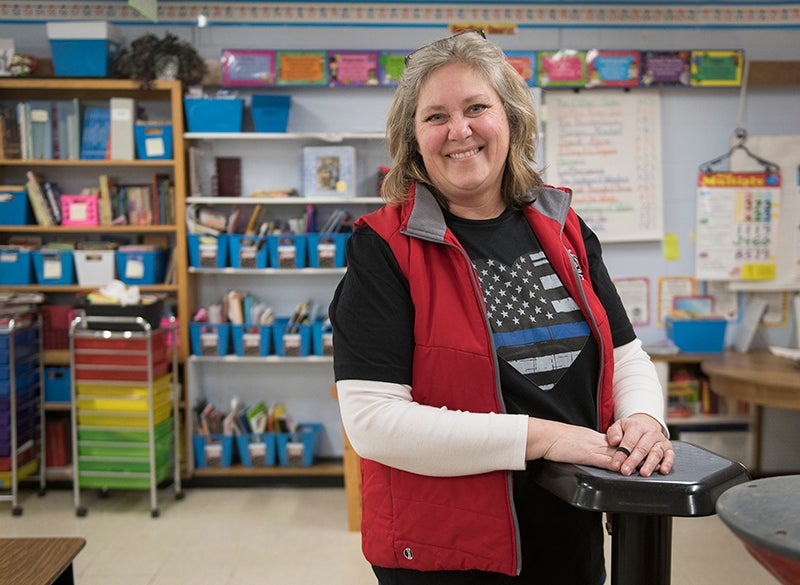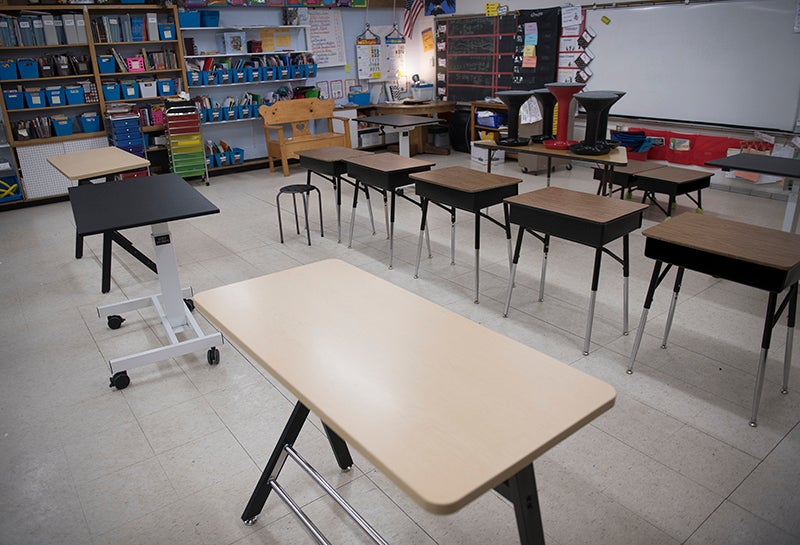Teacher allows various seating options in the classroom, sees success
Published 9:00 am Sunday, March 1, 2020

- Stephanie Hallman, a fourth-grade teacher at Alden-Conger Elementary School, has been using flexible or alternative seating in her classroom for about four years. - Colleen Harrison/Albert Lea Tribune
ALDEN — Stephanie Hallman wants each of her students to have a comfortable classroom conducive to learning. For some students, that’s achieved at a traditional school desk and chair. For others, that could be laying on a yoga mat on the floor.
Hallman, a teacher with Alden-Conger Elementary School for 16 years after being a substitute teacher for area schools for 12 years prior, first started implementing the different seating options — called flexible/flex or alternative seating — in her fourth-grade classroom about four years ago. The first few items she got for the seating were purchased after she applied and then received a grant from Freeborn-Mower Cooperative Services. Then she gradually obtained more funding through Alden-Conger’s parent-teacher organization to purchase the rest. Now, she has 42 different seating options for her 21 students — or 37 options without the inflatable rubber exercise balls the class is currently taking a break from using.
Hallman said she first got the idea to implement the seating choices after her day care and “mom experience.” She noticed that some children focused better by being able to still move or wiggle.”
“Our goal is to work hard and smart while at school, and then go home and have fun,” she said of her classroom mindset. “We feel very special to have flex seating.”
The different seating options in Hallman’s classroom include standing desks, desks that can raise or lower to different levels using a crank, hokki stools — stools that can wobble and sway, yoga mats and even a dining room table, among other options. Students’ movement is less restricted with a number of the choices, but Hallman said they know that if they fall over using any of the options or distract their classmates, they have to move on to another choice.

Hallman said there are 42 different seating options in her classroom. – Colleen Harrison/Albert Lea Tribune
What works best for each student varies, Hallman said. When taking tests, one student works best at a traditional school desk isolated from others, with folders around her acting as a makeshift wall to help her focus on the task at hand. Another focuses best laying on his or her stomach on a yoga mat while doing their work on a clipboard.
“It is a wonderful option,” Hallman said of students having different choices. “It doesn’t work for every kid, but it’s a great option that works for a lot of kids.”
After going over a general lesson plan for the next day, students are directed toward the end of each school day to figure out what kind of seating they think they’ll want to use the next day. They pick both a morning and afternoon option, and sign up on the class’s “matrix chart.” Any conflicts over wanting the same option are settled via a round of rock, paper, scissors.
While a lot of students sometimes want to sit with their friends, Hallman said she reminds them that their main objective to being in school is to learn by getting their work done.
“It’s about helping them figure out what they need to get the job done,” she said.
When thinking of concerns when considering flex seating, Hallman said some wonder where students will keep their things if they’re not using the typical school desk. Hallman has her students put their items in buckets that move with them, which they call their lockers. She said teachers need to be more relaxed to implement alternative seating choices, and that she herself has had to let go of some control since applying flex seating in her classroom.
The seating choices make her classroom feel less institutional, Hallman said, and more comfortable.
“I think, overall, when kids have choice, it’s easier to teach,” she said. “We try to make it fun.”
See more 2020 Progress stories here




